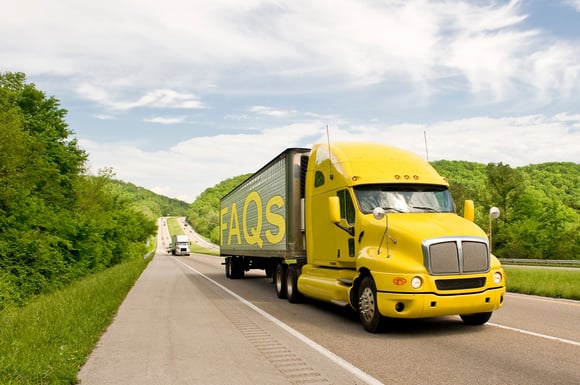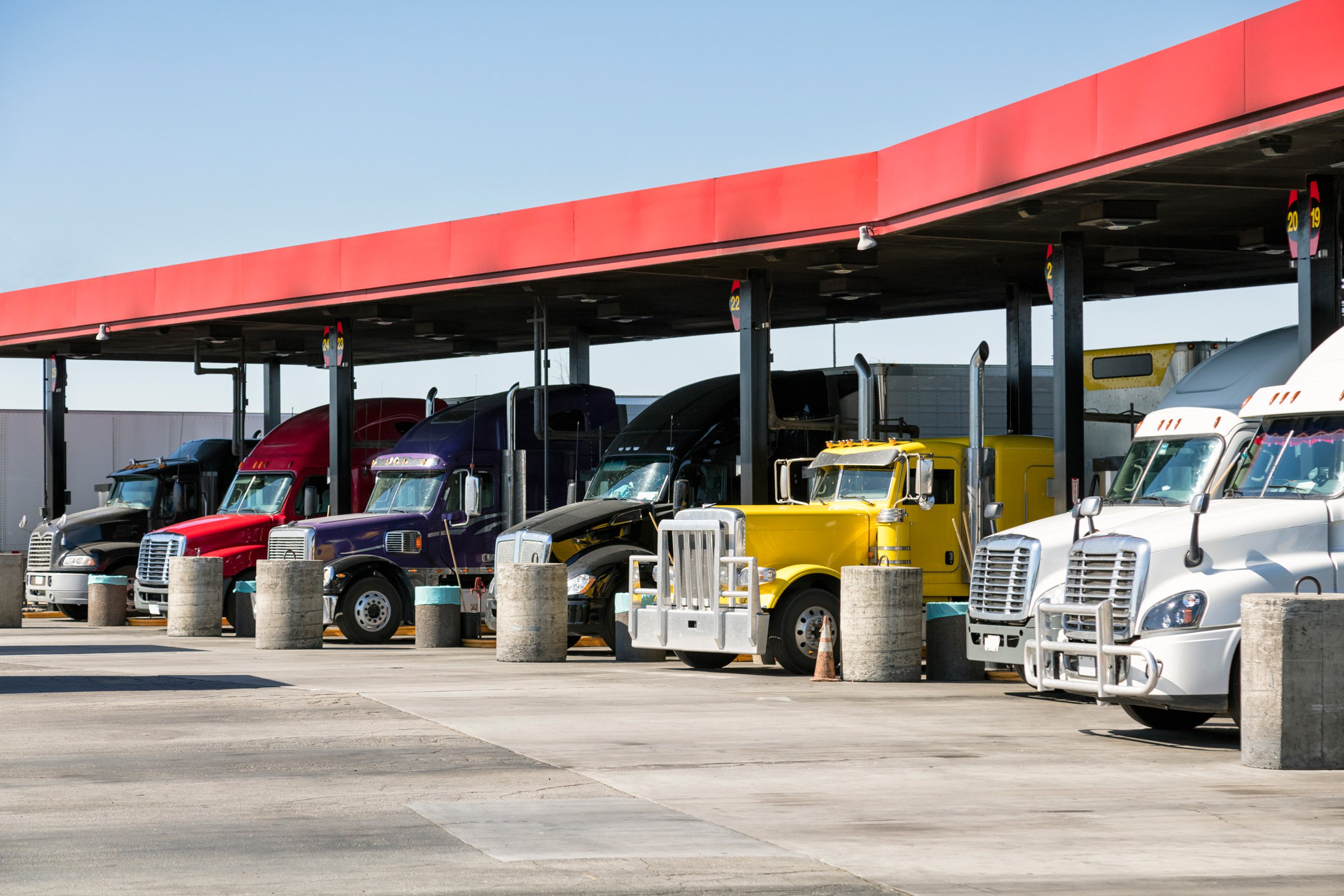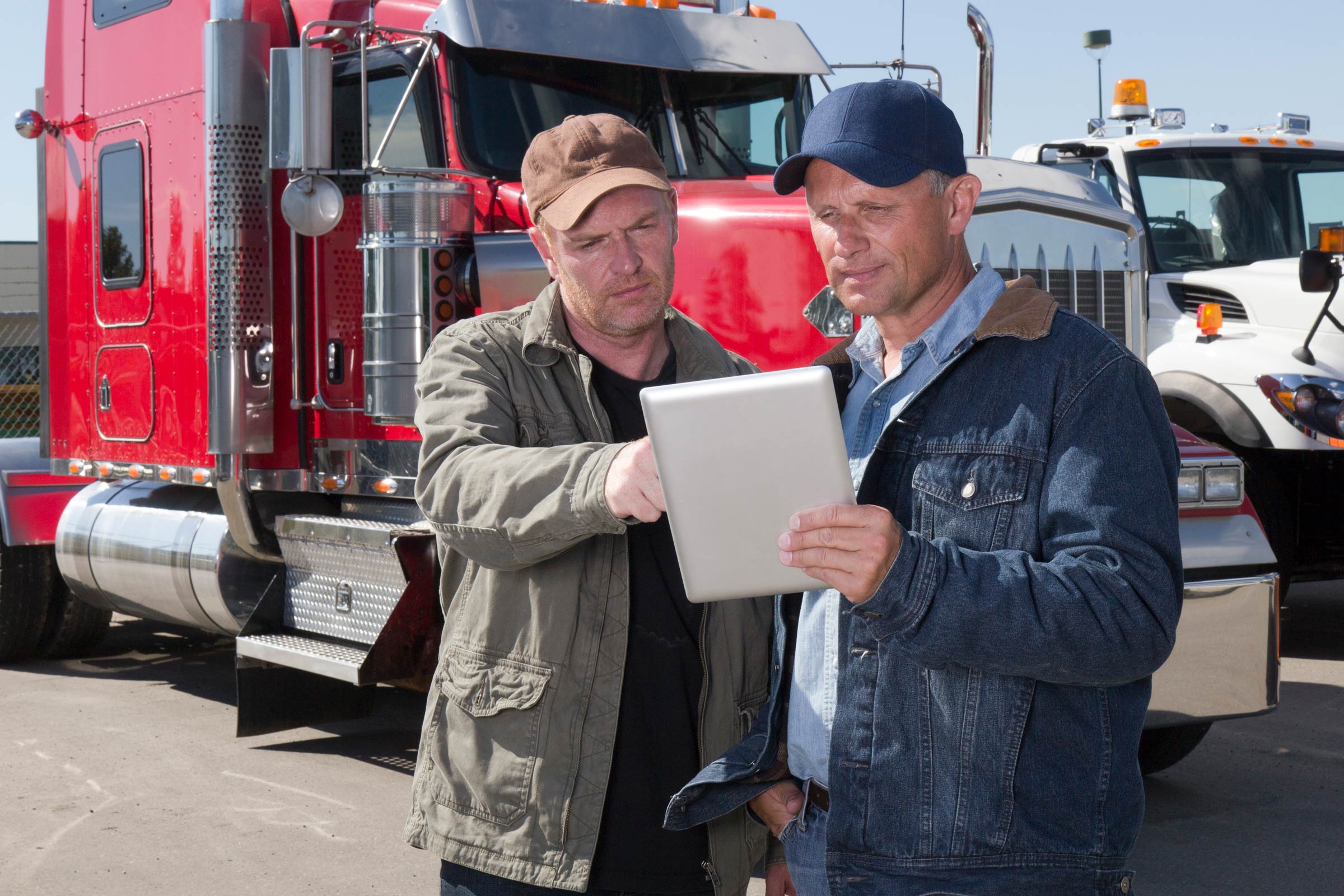Are You Ready? The Time Is Now – ELD FAQs

This is meant to be a summary of information contained in the rule. Be sure to review the rule and seek any legal advice from counsel. This material contains suggestions, and companies should find an approach that fits their unique operations best. Below is a list of several FAQs; for more FAQs and information, please visit the Federal Motor Carrier Safety Administration (FMCSA) FAQ page.
Will the mandate be thrown out or revoked?
No. It is the law and it is here to stay.
What is a “grandfathered” AOBRD?
A “grandfathered” AOBRD is a device that a motor carrier installed and required its drivers to use before the electronic logging device (ELD) rule compliance date of December 18, 2017. A motor carrier may continue to use grandfathered AOBRDs no later than December 16, 2019. After that, the motor carrier and its drivers must use ELDs (FMCSA, 2017).
Will there be training on how to utilize ELDs?
The training falls on the shoulders of the carrier. The earlier you begin your implementation and installation of the devices, the greater chance you will have of being able to utilize the vendor’s knowledge and time. Most vendors are good about providing on-hand tech support, training, and an individual representative to each account. You will want to be sure you assign someone in upper management to be the ELD project leader. This person will work directly with the vendors to assist in installation, tech issues, and training of drivers. Remember, it is not best to install and train all drivers at once. Start with your champion drivers and then trickle down from there. Again, starting early is the key. The longer you wait, the more spread thin the vendors will become with the rush of requests. This will only intensify the closer we get to December 18, 2017. If this occurs, the vendor may not be able to provide as much assistance to you during your transition period (FMCSA, 2017).
What if there is a malfunction?
Note the breakdown of the ELD and provide written notice of the failure to the motor carrier within 24 hours. Reconstruct the record of duty status (RODS) for the current 24-hour period and the previous seven consecutive days. Record the RODS on graph-grid paper logs unless the driver already has the records or retrieves them from the ELD. Continue to manually prepare RODS until the ELD is serviced and back in compliance (FMCSA, 2017).
Would an ELD or a driver be non-compliant if the data cannot be sent electronically to a safety official at a roadside check?
No. The driver must, however, be able to provide a printout or show the actual ELD display of his or her RODS. This must be done without the safety official entering the truck.
Can a driver access RODS from an ELD?
Since all ELD data outputs will be in a standard comma-delimited file (.csv file), a driver may import the data and export it to Excel, Word, Notepad, or other common file format. A driver should also be able to access the records through a screen display or printout.
Can an ELD be on a smartphone or other wireless device?
Yes. You may choose a bring-your-own-device platform which allows you to use your smartphone or a tablet device, or you may choose a platform whereby the device is specific to the vendor.
What time periods can be used to determine the 8 days in any 30-day period for exemptions?
The 30-day period does not need to be within the same month. It can be a rolling 30-day period, such as June 15 to July 15.
Are rented or leased commercial motor vehicles exempt from the ELD rule?
No. The Final Rule applies to all rented or leased commercial motor vehicles.
What must a driver do with unassigned driving time when he or she logs into the ELD?
A driver needs to review any unassigned driving time when he or she logs into the ELD. If the driving time logged under this unassigned account is accurate, a driver must add it to his or her own record.
What must a motor carrier do with unassigned driving records from an ELD?
A carrier must either explain the reason for the unassigned time or assign the time to the correct driver. A carrier must retain unidentified driving records for at least six months to make available when asked by authorized safety officials.
How precise will the location information recorded by the ELD be?
During on-duty driving periods, the location accuracy is approximately within a one-mile radius. When a driver operates a CMV for personal use, the position reporting accuracy will be approximately within a 10-mile radius (FMCSA, 2017).
What about loading, docking, and delays?
In the world of trucking, at times we experience delays. Whether it is a delay at a shipper or a traffic jam, the ELD will be running. A driver is considered on duty the moment the truck starts moving at a higher speed than five MPH. Once a driver leaves the terminal and goes to pick up a load, while the truck is being loaded, the driver is on-duty. If it takes an additional two hours longer than expected, that time must come off the driver’s on-duty time.
What is the definition of harassment in the ELD rule?
FMCSA defines harassment as an action by a motor carrier toward one of its drivers that the motor carrier knew, or should have known, would result in the driver violating hours of service (HOS) rules. These rules prohibit carriers from requiring drivers to drive when their ability or alertness is impaired due to fatigue, illness, or other causes that compromise safety. To be considered harassment, the action must involve information available to the motor carrier through an ELD or other technology used in combination with an ELD. FMCSA explicitly prohibits a motor carrier from harassing a driver (FMCSA, 2017).
If a driver relocates to another state and obtains a new commercial drivers license, should the motor carrier edit the driver profile to change the license and state information? If so, how would the two accounts link together for the recording of the prior seven days?
The Final Rule states that a motor carrier must manage ELD accounts. Therefore, the driver’s license information must be updated in the ELD. If the data files from an individual’s old and new driver license files cannot be merged, the driver must either manually enter the previous duty status information or provide a printout from the older HOS to provide an accurate accounting of the duty status for the current and previous seven days for authorized safety officials (FMCSA, 2017).
How can a motor carrier be sure an ELD device will be compliant?
You should purchase an ELD that is certified by the manufacturer to be compliant and that is registered and listed on the FMCSA website.
What happens if an ELD is found to be non-compliant after it is in use?
As a motor carrier, you will have eight days from notification to replace your non-compliant device with a compliant one. This is the same time allowed to take action on ELDs that need to be repaired, replaced, or serviced. In the event of a widespread issue, FMCSA will work with affected motor carriers to establish a reasonable timeframe for replacing non-compliant devices with ELDs that meet the requirements (FMCSA, 2017).
How long must motor carriers retain RODS and supporting documents?
Motor carriers must retain these for six months. However, there may be other reasons that you need to retain those documents for a longer period of time, such as when a litigation hold has been placed on the records.
What are the categories of supporting documents?
The FMCSA has outlined five categories:
- Bills of lading, itineraries, schedules, or equivalent documents that show the starting and ending location for each trip
- Dispatch records, trip records, or equivalent documents
- Expense receipts related to on-duty and off-duty periods (meals, lodging, fuel, etc.)
- Fleet management system communication records
- Payroll records, settlement sheets, or equivalent documents showing payment to a driver
- Drivers using paper RODS must also keep toll receipts; these do not count towards the eight- document cap
For more information about the regulations contact your Great West Safety Representative or go to the FMCSA website.
“Frequently Asked Questions (FAQs) - ELD Rule.” Federal Motor Carrier Safety Administration, United States Department of Transportation, 26 Aug. 2016, www.fmcsa.dot.gov/hours-service/elds/faqs. Accessed 18 May 2017.
The information in this article is provided as a courtesy of Great West Casualty Company and is part of the Value-Driven® Company program. Value-Driven Company was created to help educate and inform insureds so they can make better decisions, build a culture that values safety, and manage risk more effectively. To see what additional resources Great West Casualty Company can provide for its insureds, please contact your Safety Representative, or click below to find an agent.
© Copyright Great West Casualty Company 2017. The material in this publication is the property of Great West Casualty Company unless otherwise noted and may not be reproduced without its written consent by any person other than a current insured of Great West Casualty Company for business purposes. Insured should attribute use as follows: “Used with permission by Great West Casualty Company.”
This material is intended to be a broad overview of the subject matter and is provided for informational purposes only. Great West Casualty Company does not provide legal advice to its insureds, nor does it advise insureds on employment-related issues. Therefore, the subject matter is not intended to serve as legal or employment advice for any issue(s) that may arise in the operations of its insureds. Legal advice should always be sought from the insured’s legal counsel. Great West Casualty Company shall have neither liability nor responsibility to any person or entity with respect to any loss, action, or inaction alleged to be caused directly or indirectly as a result of the information contained herein.




